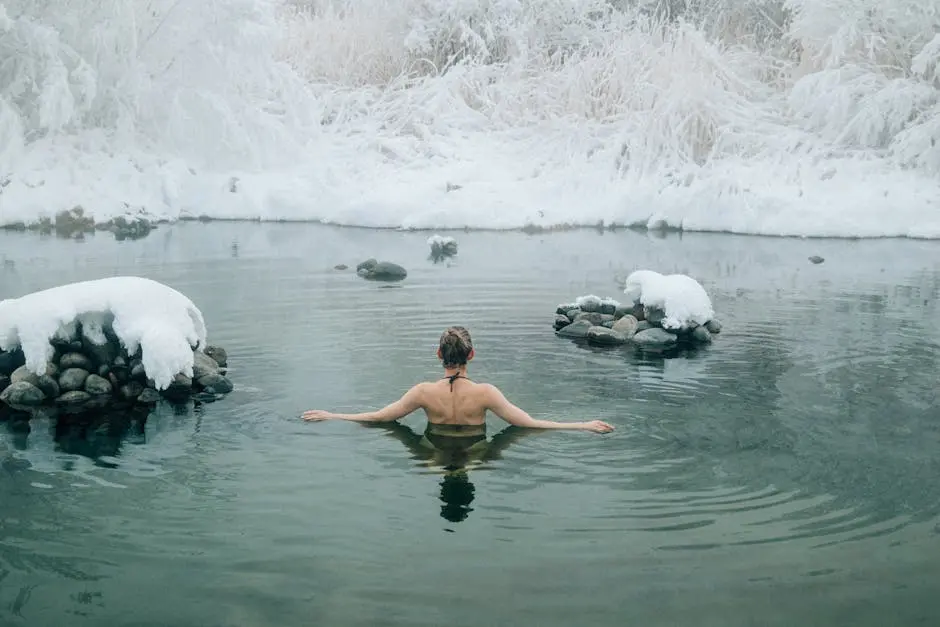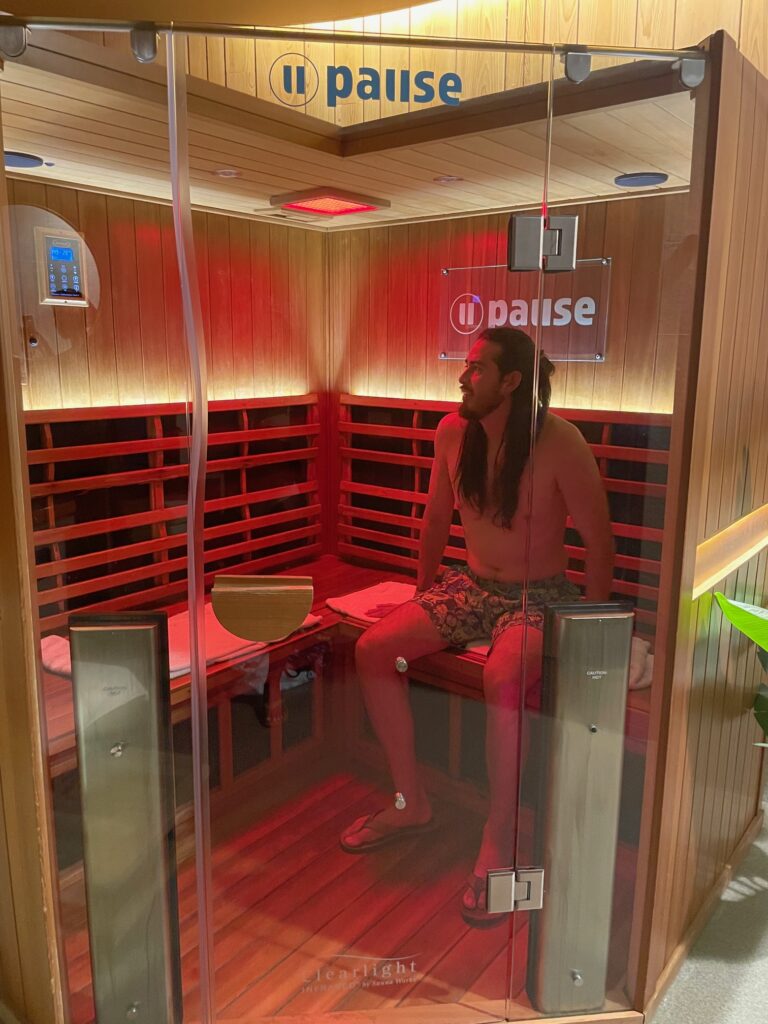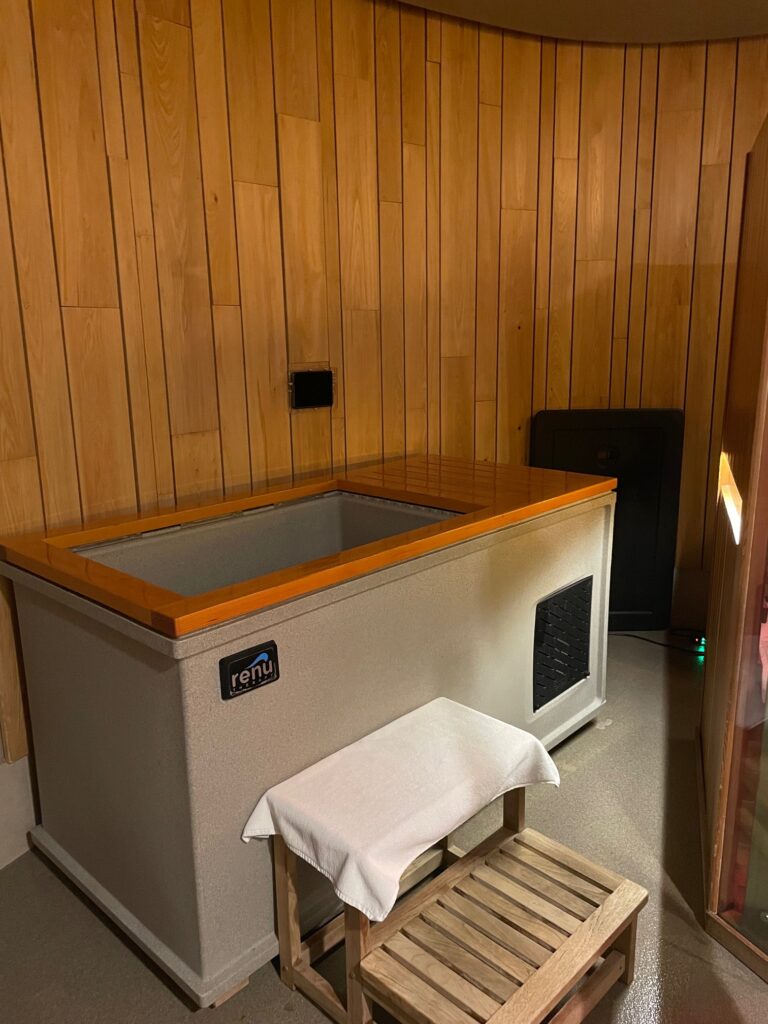
Understanding Contrast Therapy
Contrast therapy involves alternating between periods of heat exposure in an infrared sauna and cold exposure, often through ice baths or cold shower. This method leverages the body’s response to temperature changes to enhance circulation, reduce inflammation, and boost recovery.
The concept behind contrast therapy is relatively simple but profoundly effective. When exposed to heat in an infrared sauna, your blood vessels dilate, which increases blood flow and reduces muscle stiffness. Following this with cold exposure causes the blood vessels to constrict. This alternating pattern creates a ‘pumping’ action that improves the elimination of metabolic waste products from muscles, enhancing recovery after intense physical activities.
Contrast therapy can also aid in reducing delayed onset muscle soreness (DOMS), making it particularly useful for athletes seeking quicker recovery times. Additionally, the combination of heat and cold can lead to an invigorating sensation that helps reduce stress and promote mental clarity. This practice has seen renewed interest as more people discover its continued benefits.
What is an Infrared Sauna?

An infrared sauna uses infrared light to generate heat. Unlike traditional saunas that heat the air around you, infrared saunas heat your body directly. This leads to a more intense sweat at a lower temperature, making it a more comfortable and effective way to detoxify and relax.
The unique mechanism of infrared saunas allows for deeper penetration of heat into the body, reaching the muscles and tissues more effectively than traditional saunas. This deep heat can help relieve muscle tension and promote a sense of overall relaxation. Moreover, infrared saunas are known to boost cardiovascular health by mimicking the effects of moderate exercise, increasing heart rate and improving circulation.
In addition to physical benefits, regular use of an infrared sauna can also support mental well-being. The soothing heat promotes the release of endorphins, often referred to as ‘feel-good’ hormones, which can reduce stress and anxiety. This makes it an excellent tool for maintaining both physical and mental health.
How Cold Therapy Works

Cold therapy, which includes methods like ice baths and cold showers, works by constricting blood vessels and reducing metabolic activity. This process helps decrease inflammation, relieve pain, and speed up muscle recovery, making it a popular choice for athletes and individuals with chronic pain.
Beyond pain relief and recovery, cold therapy can significantly enhance your immune response. Regular exposure to cold temperatures is known to increase the production of white blood cells, which are crucial for fighting off infections. The cold also activates brown fat, a type of fat tissue that burns energy to generate heat, thereby contributing to weight control.
Another notable benefit of cold therapy is its effect on mental health. The intense cold can trigger the release of norepinephrine, a hormone related to mood enhancement and stress reduction. Hence, integrating cold therapy into your wellness routine can be an effective way to combat feelings of depression and anxiety, leaving you feeling more energized and mentally balanced.
My Weekend Experience with Contrast Therapy
Over the weekend, my fiancée and I decided to immerse ourselves in a contrast therapy session at Pause Studio in Venice. It began with a quick showering before the infrared sauna. We chose to do the sauna first in hopes that once it was time for the cold plunge, we’d be welcoming some cold relief! The initial wave of heat was soothing. Even though it was hot it wasn’t unbearable (I’ve been in saunas where I could barely breathe!) We stayed in the sauna for about 9 minutes and then switched off going into the cold plunge. Now, the cold plunge took much more to get use to than I anticipated. I made the mistake of not immersing myself in the plunge up to my shoulders, instead the cold froze me just before I could put my chest in so every movement of frigid water that touched areas not submerged felt 10x worse. It was recommended to stay in for 1-3 minutes. I barely made it to 1 minute. My fiancée however did two keys things that helped in make it to 3 minutes:
- Sat all the way in the plunge, hands and all
- Practiced deep and slow meditative breathing
Within a couple of seconds he was able to adapt to the temperatures and made it to the 3 minutes.
After warming back up in the sauna, I was eager to try the cold plunge again. This time I went half way up my chest (which was progress for me!). This time was much more tolerable and with the slow breathing I truly adjusted within 1 minute and was able to do a 2 minute session. Knowing what I know now, next time I’m shooting for three minutes! After returning to the infrared heat one more time, we showered and felt invigorated and motivated to make the best out of the day. I would HIGHLY recommend this treatment as a jump start to your physical and mental health. It truly left us feeling like we could tackle anything!
Hot Tip: I brought a showercap and applied a leave-in conditioner to my hair to avoid over-drying. My fiancée has long straight hair and didn’t bring a shower cap or apply conditioning agents and definitely noticed his hair felt very dry. Also, if you’re squeamish of communal, wet floors like me, bring flip flops.
Also Read: My Experience With Float Therapy And Its Many Benefits!
References:
https://www.sweathouz.com/hot-and-cold-a-look-into-the-benefits-of-contrast-therapy





You must be logged in to post a comment.